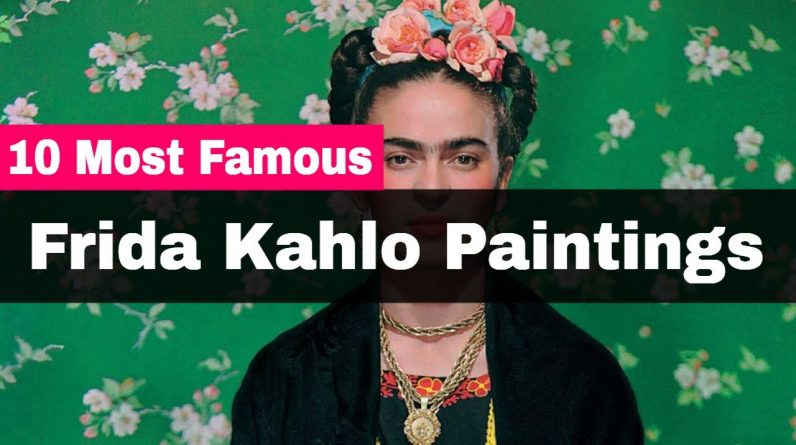Did you know that Raphael, one of the greatest Italian Renaissance painters, created some of the most famous paintings in history?
In this article, we will explore the 10 most famous Raphael paintings that have captivated art enthusiasts for centuries.
From the serene beauty of the Madonna of the Goldfinch to the intellectual masterpiece of The School of Athens, Raphael’s talent and skill shine through in each of his works.
You will also discover other renowned paintings such as the Sistine Madonna, The Transfiguration, and The Marriage of the Virgin.
Join us on this artistic journey as we delve into the brilliance and artistry of Raphael and his iconic creations.
Madonna of the Goldfinch
The ‘Madonna of the Goldfinch’ is a renowned masterpiece by Raphael. This painting, completed in 1506, depicts the Virgin Mary with the infant Jesus and John the Baptist. The central focus of the composition is the tender interaction between the three figures.
The Madonna gently holds the goldfinch, a symbol of Christ’s future crucifixion, while Jesus reaches out to touch the bird. John the Baptist, a young boy, looks on with adoration. Raphael’s skillful use of color and light brings depth and emotion to the scene. The soft, warm tones of the figures contrast with the vibrant blue sky in the background.
The artist’s attention to detail, such as the delicate folds of the Madonna’s garment and the intricate patterns of the plants, further enhances the overall beauty of the painting. The ‘Madonna of the Goldfinch’ is a testament to Raphael’s exceptional talent and his ability to capture the essence of a moment with precision and grace.
The School of Athens
Continuing the exploration of Raphael’s most famous paintings, let’s delve into the captivating world of ‘The School of Athens’.
This masterpiece, painted between 1509 and 1511, is a fresco located in the Apostolic Palace in Vatican City. ‘The School of Athens’ depicts a gathering of philosophers and scholars from ancient Greece, showcasing Raphael’s exceptional ability to capture human figures in motion.
The composition is meticulously arranged, with each character representing a different school of thought or philosophy. Notable figures such as Plato, Aristotle, and Socrates take center stage, engaging in lively debates and discussions. The use of perspective creates a sense of depth and grandeur, drawing the viewer into the scene.
‘The School of Athens’ is a testament to Raphael’s artistic skill and his profound understanding of classical knowledge and philosophy.
Sistine Madonna
What makes the Sistine Madonna one of Raphael’s most famous paintings?
The answer lies in its exquisite composition, masterful technique, and emotional resonance.
Created between 1512 and 1513, this iconic work portrays the Virgin Mary holding the Christ child, surrounded by two fluttering angels.
The figures are rendered with remarkable precision, their expressions conveying a sense of serene devotion.
The use of light and shadow adds depth and dimension to the scene, while the vibrant colors evoke a sense of spirituality.
The painting’s fame also stems from its impact on art history, as it influenced countless artists throughout the centuries.
Its presence in the Dresden Gemäldegalerie only heightens its allure, making the Sistine Madonna a must-see masterpiece for art enthusiasts worldwide.
The Transfiguration
Explore another masterpiece by Raphael, the Transfiguration, which showcases his unparalleled artistic skill and ability to evoke profound emotions. This iconic painting, completed in 1520, is a testament to Raphael’s mastery of composition and his ability to convey complex narratives through visual art.
The Transfiguration depicts the biblical event in which Jesus is transfigured before his disciples, accompanied by Moses and Elijah. The upper part of the painting portrays the celestial scene, with Jesus radiating divine light and Moses and Elijah appearing in spiritual form.
In stark contrast, the lower part presents a scene of despair and suffering, as the disciples attempt to heal a possessed boy. Through his masterful use of color, light, and perspective, Raphael creates a striking juxtaposition between the divine and the earthly, inviting viewers to contemplate the intersection of spirituality and human suffering.
The Transfiguration is a testament to Raphael’s ability to capture the complexity of human experience and his enduring legacy as one of the greatest painters in history.
The Marriage of the Virgin
Now let’s delve into the masterpiece of ‘The Marriage of the Virgin’ by Raphael.
This iconic painting captures the biblical story of the marriage between Mary and Joseph. The scene unfolds in a grandiose setting, with the couple standing at the center, surrounded by a host of witnesses and onlookers.
The composition is meticulously crafted, showcasing Raphael’s mastery in creating a harmonious balance of figures and architectural elements. The use of warm colors, such as reds and golds, adds a sense of richness and opulence to the painting. Raphael’s attention to detail is evident in the intricate clothing and facial expressions of each character, bringing them to life on the canvas.
‘The Marriage of the Virgin’ is a testament to Raphael’s skill in capturing both the divine and human aspects of this sacred event.
Portrait of Baldassare Castiglione
Moving from ‘The Marriage of the Virgin’, let’s now explore the captivating ‘Portrait of Baldassare Castiglione’ by Raphael.
This masterpiece, painted in 1514-1515, depicts the Italian diplomat and writer, Baldassare Castiglione. The portrait showcases Raphael’s exceptional ability to capture the essence of his subjects. Castiglione’s gaze is intense, his eyes conveying a sense of wisdom and depth.
Raphael’s meticulous attention to detail is evident in the intricate rendering of the clothing, the fine lines of the face, and the subtle play of light and shadow. The composition is balanced and harmonious, with Castiglione placed in a three-quarter view against a dark background, further emphasizing his dignified presence.
The portrait not only encapsulates Castiglione’s individuality but also serves as a testament to Raphael’s mastery in portraiture.
The Deposition
One of Raphael’s most famous paintings is ‘The Deposition’, which showcases his mastery in capturing the emotional intensity of the scene. Created between 1507 and 1508, this masterpiece depicts the moment when the body of Jesus is taken down from the cross and mourned by his loved ones.
The composition is filled with anguish and sorrow, as the figures mournfully gather around the lifeless body. Raphael’s meticulous attention to detail is evident in the expressions of grief on each face, from the anguished Mary to the sorrowful disciples.
The use of light and shadow further enhances the dramatic atmosphere, emphasizing the depth of emotion. ‘The Deposition’ is a testament to Raphael’s ability to convey the profound emotional impact of a religious narrative through his exceptional artistic skills.
The Miraculous Draught of Fishes
To fully appreciate Raphael’s brilliance, you must delve into the captivating scene of ‘The Miraculous Draught of Fishes’. This masterpiece, completed in 1515, showcases Raphael’s exceptional ability to portray movement, emotion, and narrative in a single composition.
The painting depicts the biblical story of Jesus performing a miracle by causing a large catch of fish to fill the nets of his weary disciples. The scene is alive with energy as the disciples struggle to contain the abundance of fish. Raphael’s meticulous attention to detail is evident in the expressions on their faces, the tension in their bodies, and the intricate depiction of the fish.
Through his skillful use of color, light, and composition, Raphael transports us into the heart of this miraculous event, leaving us in awe of his artistic genius.
The Ansidei Madonna
Now let’s explore ‘The Ansidei Madonna’, one of Raphael’s most famous paintings.
This masterpiece was created by Raphael in 1505 and is currently housed in the National Gallery in London.
The painting depicts the Virgin Mary holding the infant Jesus, surrounded by Saint John the Baptist and Saint Nicholas of Tolentino.
The composition is meticulously balanced, with the figures arranged in a pyramid shape, creating a sense of stability and harmony.
The use of light and shadow adds depth and dimension to the painting, while the vibrant colors and intricate details showcase Raphael’s mastery of technique.
‘The Ansidei Madonna’ is a testament to Raphael’s ability to capture the beauty and grace of the human form, making it a truly timeless work of art.
Portrait of Pope Julius II
You frequently encounter the iconic ‘Portrait of Pope Julius II’ when exploring the most famous Raphael paintings. This masterpiece is a testament to Raphael’s skill in capturing not only the physical likeness of his subjects but also their inner essence.
The painting depicts Pope Julius II, a powerful and influential figure of his time, with a commanding presence that emanates from his piercing gaze and regal attire. Raphael’s meticulous attention to detail is evident in the intricate rendering of the Pope’s facial features, from the lines on his forehead to the wisps of gray hair.
The use of light and shadow adds depth and dimension to the painting, further enhancing the Pope’s authority. With this portrait, Raphael immortalizes Pope Julius II, capturing his essence for eternity.
Frequently Asked Questions
What Is the Meaning Behind the Use of Goldfinch in Raphael’s Painting “Madonna of the Goldfinch”?
The meaning behind the use of a goldfinch in Raphael’s painting ‘Madonna of the Goldfinch’ is thought to symbolize Christ’s future suffering and death. The bird represents the crucifixion and the Madonna’s sorrow.
How Long Did It Take Raphael to Complete “The School of Athens”?
It took Raphael several years to complete ‘The School of Athens.’ The intricate details and composition required careful planning and execution. The result is a masterpiece that showcases his skill and artistic vision.
Who Commissioned Raphael to Paint the Sistine Madonna and Why?
Raphael was commissioned to paint the Sistine Madonna by Pope Julius II. The painting is renowned for its beauty and emotional power. The pope wanted a devotional image for the new altar in the Sistine Chapel.
What Is the Religious Significance of “The Transfiguration”?
The religious significance of ‘The Transfiguration’ lies in its depiction of the biblical event where Jesus is transformed into radiant glory. This painting by Raphael captures the divine nature of Christ and symbolizes his role as the Son of God.
What Is the Historical Context Behind “The Marriage of the Virgin”?
The historical context behind ‘The Marriage of the Virgin’ is rooted in Renaissance Florence, where Raphael painted this piece early in his career. It depicts the biblical story of Mary’s marriage to Joseph, reflecting the ideals and customs of the time.
Conclusion
In conclusion, Raphael’s paintings are renowned for their exceptional beauty and skillful execution. His works capture the essence of religious and mythological themes, showcasing his mastery of composition, color, and detail.
From the tender depiction of Madonna and Child in ‘Madonna of the Goldfinch’ to the grandeur of ‘The School of Athens,’ Raphael’s art continues to inspire and captivate viewers. Each painting reflects his profound understanding of human emotion and his ability to convey it through his brushstrokes.
Raphael’s legacy as one of the greatest painters of the Renaissance remains undeniable.






